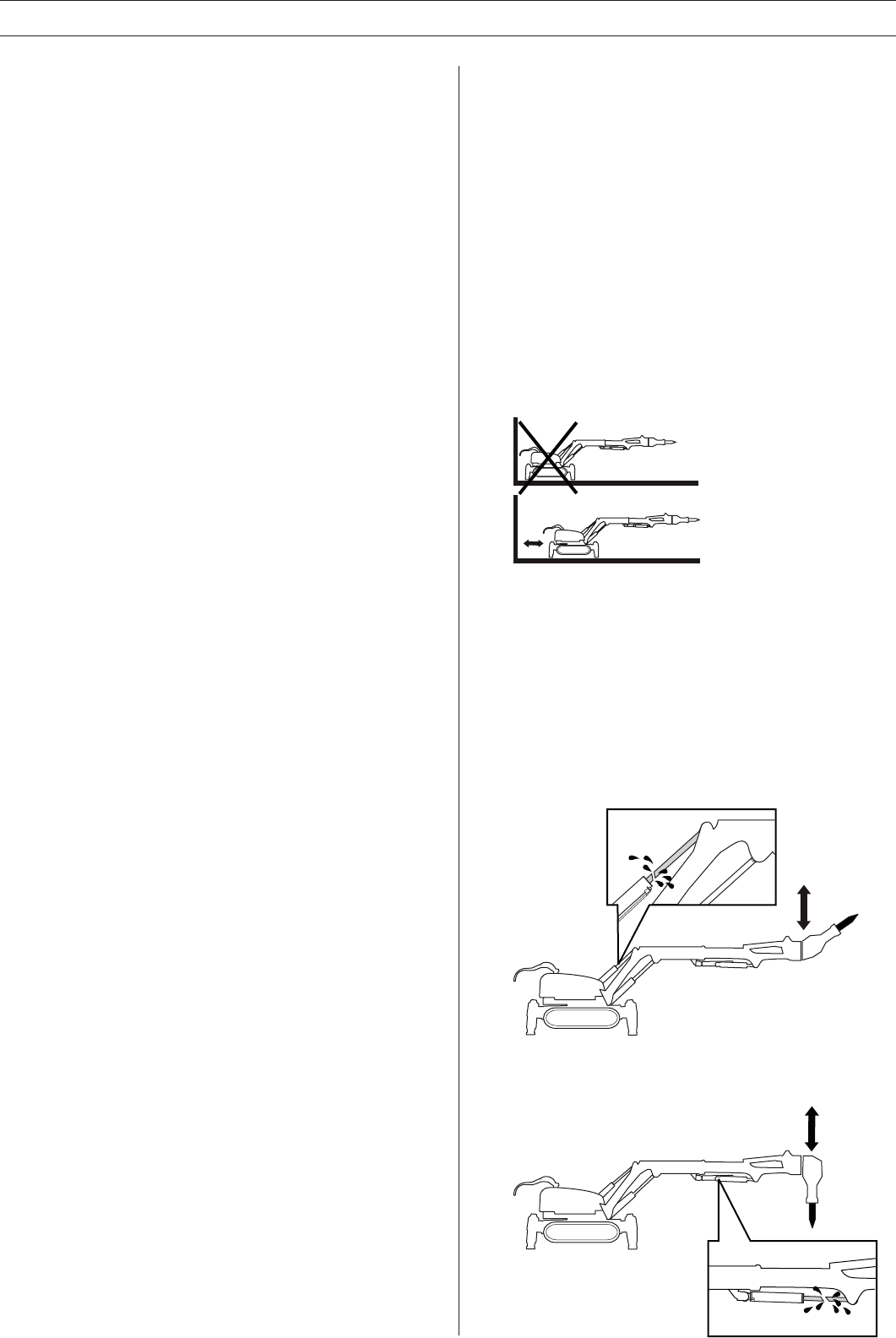
SAFETY INSTRUCTIONS
Manoeuvring
General
• If several machines are used at the same workplace
there is a risk of mixing up the remote controls.
Switch on the current to the remote control and
the machine. Press the horn to see which machine
is connected to the remote control. The machine
will beep and fl ash three times. Do not activate the
remote control before you have ensured that the
correct machine is being operated.
• Wait until the remote control has been turned off
and the motor has stopped before you enter into
the machine’s risk area.
• Never leave the machine unsupervised with the
motor running.
• The machine can overturn during work. During op-
eration the machine must be positioned as level as
possible and the outriggers must be fully extended.
• In some cases it can be diffi cult to determine which
end of the machine is the front and which is the
rear. Look at the direction markings on the sides of
the machine’s tracks to avoid incorrect operation.
Outriggers
• When the outriggers are folded, the arm must be
retracted to minimize the risk of the machine over-
turning.
• The machine’s outriggers can leave the ground,
especially when working with a hydraulic hammer or
bucket. The higher the machine rises the greater the
load the rest of the support mechanism is subject
to.
• When working with a hydraulic hammer there is an
increased risk of the machine tipping or landing with
a large force on the outrigger on impact. Take this
risk into account and institute appropriate safety
measures to avoid any personal injury or mechanical
damage.
Rotation function
• If there is a breakdown in the machine’s rotation
mechanism the machine’s upper part may rotate
freely, potentially causing personal injury or me-
chanical damage. Keep your distance.
• The machine is most stable when working directly
forwards or backwards. When the machine’s upper
part rotates to the side, the outriggers should be
down and the arm system manoeuvred so that it is
as close to the ground as possible.
• In some cases it can be diffi cult to predict the
direction of rotation. Operate the turning motion
carefully until you have apprehended the direction
of rotation.
Arm system
• Do not use the arm system and the rotation func-
tion for striking, demolishing or scraping.
• Do not work with the arm if the machine’s outrig-
gers are folded. The outriggers provide stability
and reduce the risk of the machine tipping.
• When the arm system’s reach is being used, the
load increases as does the risk of tipping. Posi-
tion the machine as close to the working object as
possible.
• Never use the telescopic arm to press the tool
against the working object.
• Do not secure the machine to fi xed objects, e.g.
walls, to increase the force on the working object.
Both the machine and the tool can be subject to
overloading.
• Do not work with the machine’s cylinders in the
inner or outer end positions to avoid overloading.
Leave a few centimetres to the maximum position.
The hydraulic fl uid then has a greater capacity to
alleviate impacts and vibrations.
• There are two working positions that put a lot of
strain on individual cylinders.
Cylinders 1 and 2 are in their outer positions and
the hammer is working in the upward direction.
Never operate the cylinders to their end positions.
Cylinder 3 is in its outer position and the hammer is
working in the downward direction. Never operate
the cylinders to their end positions.
10 - English


















